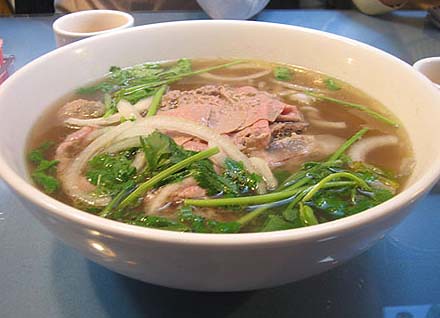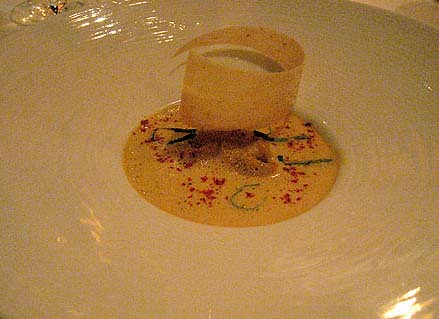After doing the Long Island wine trail, we immediately scheduled a trip up the Finger Lakes region in New York. We had to postpone it once because of the Dr.’s, schedule but after finally making the trip over the weekend, I was glad we waited until the leaves turned all sorts of fall colors.
He recently got another golden weekend and I was able to convince him, with promises only a girlfriend can make, that he should drive the six hours upstate. The Yates Chamber of Commerce gave me three places with availability after I tried calling several hotels and B&Bs in vain. If I didn’t call the Robertson House, I wouldn’t have known that they had another property for rent not listed on their Web site.
On Friday, we started our long drive early, but ended up getting stuck in traffic around Scranton, Pennsylvania, home of Dunder Mifflin, Inc. We didn’t make it to the lake house until 10:30pm. Jane and Paul Robertson left the heat on to prepare for our arrival, so when we entered the house, it was all warm and toasty. We settled in, opened and drank a bottle of red wine we brought with us and sat talking for two more hours before we fell asleep.

When I woke up the next morning, I took a peek outside and saw what the Robertsons were talking about–peaceful Keuka Lake and red, yellow, orange, brown maple trees. It was so dark and quiet the night before that I had no clue the view was going to be incredible.
We had breakfast back at the Robertson’s main house before we started our drive around Seneca Lake to visit some of the local wineries. Besides the local Reislings I’m familiar with, we didn’t really know much about the other wines and vineyards. We randomly chose from a big list but stuck around Seneca Lake and skipped the scattered ones around Keuka and Cayuga. Following are what we tasted with some of the notes I scribbled on my book.

We started at Fox Run Vineyards where it was already a zoo at 11:30am. They were offering four complimentary tastings:
1. 2005 Reserve Chardonnay — ten months in oak with vanilla notes at the end
2. 2002 Cabernet Franc — bone-dry and not as spicy as other Cabernet Francs we’re used to
3. 2004 Sable — fruity wine from Cabernet grapes we imagined would be good with some cheese
4. Ruby Vixen — very peachy; the sweetest wine from their vineyard
We also paid $2 for extra tastings of the following:
1. 2005 Dry Reisling — apricot
2. 2005 Reisling — semi-dry; more like candy than fruit
3. Arctic Fox — a Reisling and Chardonnay blend; we ended up getting a case of this because it would be an outstanding table wine with almost anything
Another separate $2 fee gave us a taste of the 2005 Reserve Reisling which smelled better than the dry Reisling and with a cleaner finish. For $30 a bottle though, we skipped it.

Our next stop was at Hermann J. Wiemer Vineyard. Their 2005 dry Reisling was recently voted New York’s best wine. (I had my first taste last year and I ended up buying half a case of that winner.) We tasted a lot of their wines, but nothing really overwhelmed us so we only bought several bottles for friends:
1. Dry Rose Pinot Noir/Chardonnay — strong at the end for a rose
2. Pinot Noir — very light yet complicated; we would have bought several of these if a bottle wasn’t $35 each
3. Late Harvest Reisling — like juice; yummy and sweet
4. Cabernet Franc — a lot of alcohol (which could be a good thing, I suppose)
5. Estate Red — a blend of Cabernet Franc, Pinot Noir and Lemberger; very tart
6. Select Late Harvest Reisling — like candy but yummier than the late harvest
We stopped by Lakewood Vineyards where it was even more of a party room than a tasting room. Everyone was part of a tour so there were plenty of screaming and shouting, both from the staff trying to do their spiel about the wines and the tasters who drink the wines as if they were shots of Tequila. Their 2004 Chardonnay was pretty anemic although the vanilla at the end was quite nice. The 2005 Long Stem Red was a hybrid of four grapes but it still lacked character. The 2002 Pinot Noir had a licorice taste to it. The Borealis Ice Wine was like drinking Welch’s grape juice. We did like the 2004 Cabernet Franc because it was dry upfront and it pleasantly went on for a while.
For lunch, we stopped by the dock to check out the menus from the different restaurants by the water but were not impressed. Before getting something to eat at Stonecat Café, we had a pretty nice experience at the Atwater Vineyard for $2 per person:
1. 2002 Estate Selection Chardonnay — 13 months in oak; pretty complicated
2. 2005 Gewürztraminer — didn’t smell so good
3. 2005 Reisling — easy-drinking that would be perfect for a hot, summer afternoon but alas, it’s not hot out anymore
4. 2005 Reserve Reisling — fruitier and gummier; almost chewable
5. 2004 Cabernet Franc — tasted like buttered popcorn but more like currant afterward
6. 2004 Cabernet Merlot — new release; well-balanced and tasty
7. 2003 Meritage — almost no tannins and very easy to drink
8. Estate White — we bought several bottles of these; crisp, light, citrus-y
The Stonecat Café is on the same grounds as the Bloomer Creek Vineyard. We had the pizette topped with mixed greens, goat cheese and pancetta. The Dr. had the cornmeal-breaded catfish sandwich. We asked for the green pepper salsa out of curiosity because they were charging an extra dollar for it. I couldn’t stop slathering it on my pizza even though I was tearing up. It was fierce!

I don’t know if it was because of all those peppers but we felt like we found some great wines afterwards at Lamoreaux Landing. Everything we tasted was better than everything else we’ve had:
1. 2004 Chardonnay — very drinkable with pineapple notes
2. 2005 Dry Reisling — a tasty wine that led to a cover on Wine Spectator last May
3. Estate White — a blend of Reisling and Chardonnay with pear and other tropical fruits
4. 2005 Gewürztraminer — good aroma and grapefruit taste
5. 2000 Brut Sparkling Wine — dry but creamy
6. 2005 Vidal Ice Wine — syrupy when pouring; overwhelmingly sweet
We haven’t been liking the red wines, but we were also pretty pleased with the Lamoreaux selections:
1. Estate Red — a blend of Pinot, Merlot and Cabernet Franc; strawberry and jammy
2. 2003 Merlot — floral mouth
3. Non Vintage Cabernet Franc — pine resin; less tarty than the other Cabernet Francs we’ve tasted earlier
4. 2004 Pinot Noir — complicated with a clove taste
We pretty much gave up after putting several more bottles in the trunk and went back to the lake house to unwind. Dinner was uneventful at Sarasin’s, a restaurant by Keuka Lake with a giant ship wheel outside. After almost 790 miles over the weekend and 12 hours of driving to and from the city–without any contribution from me–we have about twenty bottles of Chardonnays and Reislings. White is usually not the type you’d reach for in autumn, but we learned a great deal upstate. Reislings don’t always have to taste like dessert in a glass and that you can even cook with them and Chardonnay could be excellent with some curry dishes. The Finger Lakes might not have exciting food selections just yet, but I’m sure our wines will keep us full this season.
Related post/s:
Finger Lakes Map Trail
Finger Lakes photos on Flickr







